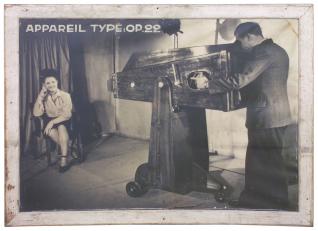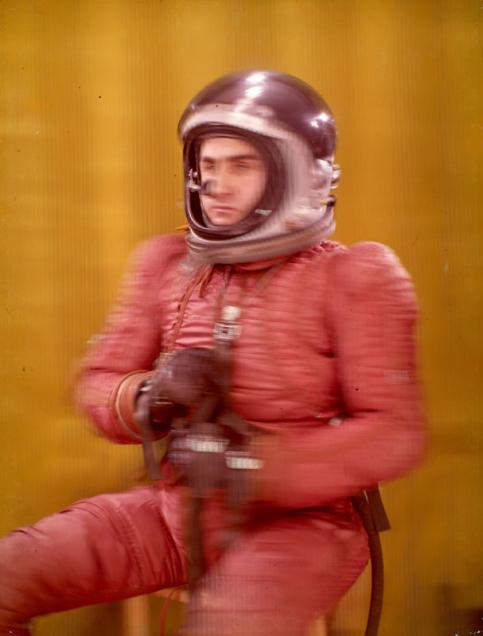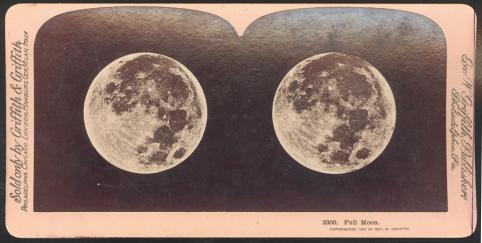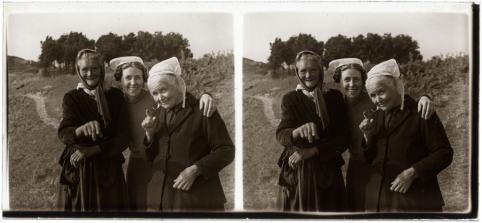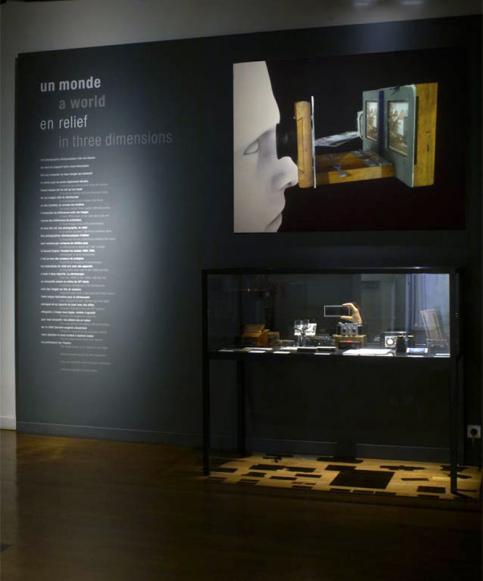Constantly searching for the most faithful transcription of reality possible, photography took an early interest in the three-dimensional. A number of processes were developed that relied on the physiological capacity of binocular vision to give the impression of relief.
The museum’s collections have a number of characteristic examples of the different techniques of relief. Among them, lined and lenticular networks enabled three dimensions to be perceived without using a machine or glasses. The multiple views necessary to recreate the effect of depth were built behind a network of opaque and transparent lines or lenses. The network was part of the image as such. These techniques were experimented and developed in France by Eugène Estanave as early as 1904, and then by Maurice Bonnet who marketed them in 1937 through his company La Relièphographie . Since their invention, these spectacular images have been frequently used for fun or for advertising.
One room in the museum is given over more particularly to stereoscopy. Thanks to the didactic qualities of new image technologies of the image, hundreds of stereoscopic view can be seen in spectacular 3D.
The stereoscopic photographs on glass or cardboard which were in vogue since the Second Empire and up until the 1930s, were originally seen individually through an optical instrument (the stereoscope) that reproduced the effect of depth and relief of the images. The museum proposes an interactive installation that lets visitors wearing polarising glasses, choose the themes they wish to explore among the particularly rich collection: the First World War, family photographs, Brittany, the world in colour, Japan, etc. Near the projector there is a display case that shows different models of stereoscopes and original shots. Finally, a 3D film takes a “verascope” apart (the camera used for stereoscopic shots dating from 1893) and enables the visitor to enter into the machine to get a better understanding of how it worked.


